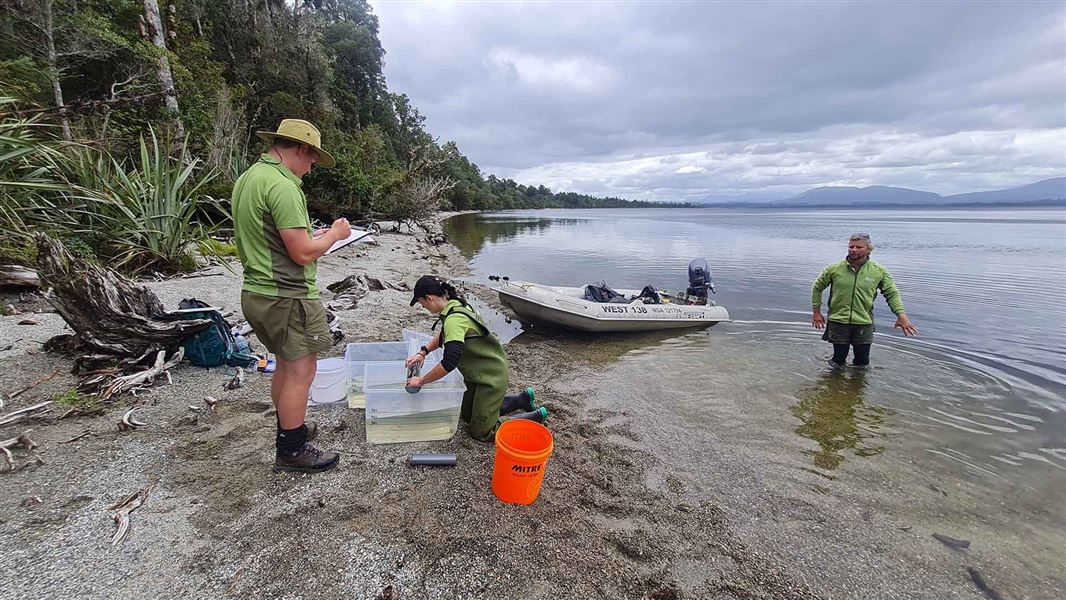
Introduction
As the Department of Conservation, we’re responsible for ensuring examples of all the species and ecosystems in Aotearoa New Zealand survive for generations to come.Our biodiversity responsibilities
The biodiversity, or biological diversity, of New Zealand is the whole range of living organisms found here. It includes every type of ecosystem and every species. Many of these ecosystems and species are found nowhere else in the world.
We are responsible for protecting and restoring enough of each land-based, lake, river, wetland, estuary and marine ecosystems to make sure they survive for the long term. This includes all the species that live in them. We are also responsible for managing native wildlife across New Zealand.
Much of our work takes place on public conservation land and waters, and in marine protected areas. We work with private landowners, councils and other agencies to manage biodiversity on land they own. International work is also important because many marine species like seabirds and marine mammals, come and go from our land and waters during their lives.
We manage approximately 8.7 million hectares of land and 5.5 million hectares of water, including 52 marine reserves. About 1,000 biodiversity staff are employed in close to 80 teams throughout the country.
Our current funding enables us to protect and restore 10–15 percent of the species and ecosystems we are responsible for.
How we manage and protect species and ecosystems
The work we do to manage species depends on how threatened they are. We use the New Zealand Threat Classification System to assess each species. Species are assigned a conservation status that ranges from Threatened, to At Risk to Not Threatened. Threatened species generally receive the most management.
Conservation status of plants and animals
Ecosystems are also classified and managed according to their threat status. They range from Critically Endangered to Not Threatened. Rare and threatened ecosystems like shell barrier beaches, seasonal wetlands and limestone outcrops receive tailored long-term maintenance like weed control.
Our work also involves reducing threats (like weeds or diseases) to species and ecosystems in particular places. Predator-free islands and fenced sanctuaries are a tool we use to completely remove the threat of predators and wild animals in an area.
We use a system called BioInvest to plan, cost, monitor and report on all our biodiversity work across the country. It groups our biodiversity work into 33 programmes. BioInvest is supporting a shift from a focus on particular issues and species to prioritised investment across all our biodiversity work.
Intensive management for the most threatened species
Species with a conservation status of Nationally Critical have the highest risk of extinction, and currently number around 550. Our management is tailored to each species, for example protecting individual kākāpō nests or breeding rare plants in nurseries.
Looking after ecosystems also benefits species
Protecting different ecosystems from a range of threats secures habitat for most of our threatened species so they can thrive. This work also protects many species that we don’t know much about, giving us time to learn more and ensure they are properly protected.
Reducing the numbers of predators, weeds and browsing animals
Our work through the National Predator Control Programme targets invasive predators at a landscape scale. Reducing their numbers allows many species and habitats to recover.
National Predator Control Programme
We also manage specific weeds at particular locations to protect threatened plants and ecosystems. Managing wild animals in specific areas is also part of our threat management work.
Research to improve our work
The research we do is critical for expanding and improving the tools we use to manage biodiversity. Through research we also learn the best ways to restore and protect species and ecosystems.
Improving our knowledge of marine biodiversity, for example, will help us discover why some species are declining, what we can do about it and where we should prioritise protection. Research will also help us develop better tools to control pests such as mice and hedgehogs at a large scale.
Biodiversity work we are required to do
Some of the biodiversity work we do is set down in agreements with other parties.
This includes:
- Regional Pest Management Plans that each regional council uses to manage pest animals and plants in its region.
- International agreements for managing World Heritage and Ramsar (internationally significant wetlands) sites in New Zealand.
- Involvement in resource consent hearings that could affect threatened species and ecosystems, especially for freshwater biodiversity.